|
|
|
 |
 |
 |
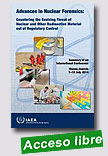 |
Advances in Nuclear Forensics: Countering the Evolving Threat of Nuclear and Other Radioactive Material out of Regulatory Control
IAEA Proceedings Series, 2015, 149 p.
The International Conference on Advances in Nuclear Forensics: Countering the Evolving Threat of Nuclear and Other Radioactive Material out of Regulatory Control was organized by the IAEA and held in Vienna on 7–10 July 2014. The conference was organized in cooperation with the Nuclear Forensics International Technical Working Group (ITWG), the .
|
International Criminal Police Organization (INTERPOL) and the Global Initiative to Combat Nuclear Terrorism (GICNT). The conference was attended by 285 participants and observers from 76 Member States and 8 organizations.
The objective of the conference was: to convene the first of its kind international conference solely dedicated to nuclear forensics: to review the role of nuclear forensics as an essential element of a nuclear security infrastructure; to present scientific achievements and to exchange experience and lessons learned on the implementation of nuclear forensics in support of law enforcement investigations and nuclear security vulnerability assessments; to review current practices in nuclear forensics and to identify advances in analytical tools; to discuss ways of strengthening nuclear forensic capabilities and capacity building in nuclear forensics to ensure sustainability; and to explore mechanisms to enhance international and regional cooperation in nuclear forensics as well as to best position the IAEA to provide assistance to States, upon request, in nuclear forensics.
This publication provides the President’s summary and findings of the conference as well as summaries of all the sessions. The accompanying CD-ROM contains the full conference programme, the list of participants and the papers
Extraído de: http://www-pub.iaea.org/books/IAEABooks/10881/Advances-in-Nuclear-Forensics-Countering-the-Evolving-Threat-of-Nuclear-and-Other-Radioactive-Material-out-of-Regulatory-Control
|
 |
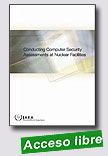 |
Conducting Computer Security Assessments at Nuclear Facilities
IAEA, 2016, 64 p.
Computer security is increasingly recognized as a key component in nuclear security. As technology advances, it is anticipated that computer and computing systems will be used to an even greater degree in all aspects of plant operations including safety and security systems. A rigorous and comprehensive assessment process can assist in strengthening the effectiveness of the computer security |
programme. This publication outlines a methodology for conducting computer security assessments at nuclear facilities. The methodology can likewise be easily adapted to provide assessments at facilities with other radioactive materials.
Extraído de: http://www-pub.iaea.org/books/IAEABooks/10999/Conducting-Computer-Security-Assessments-at-Nuclear-Facilities
|
 |
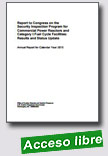 |
Report to Congress on the Security Inspection Program for Commercial Power Reactors and Category I Fuel Cycle Facilities: Results and Status Update - Annual Report for Calendar Year 2015
U. S. Nuclear Regulatory Commission, June 2016, 36 p.
This report fulfills the requirements of Section 170D.e of Chapter 14 of the Atomic Energy Act of 1954 (42 U.S.C. §2210d.e), as amended, which states, “[n]ot less often than once each year, the Commission shall submit to the Committee on Environment and Public Works of the Senate
|
and the Committee on Energy and Commerce of the House of Representatives a report, in classified form and unclassified form, that describes the results of each security response evaluation conducted and any relevant corrective action taken by a licensee during the previous year.” This is the eleventh annual report, which covers calendar year 2015. In addition to information on the security response evaluation program (force-on-force inspections), the U.S. Nuclear Regulatory Commission (NRC) is providing additional information regarding the overall security performance of the commercial nuclear power industry and Category I fuel cycle facilities to keep Congress and the public informed of the NRC’s efforts to protect public health and safety, the common defense and security, and the environment through the effective regulation of the Nation’s commercial nuclear power facilities and strategic special nuclear material.
Extraído de: http://www.nrc.gov/docs/ML1608/ML16081A367.pd
|
 |
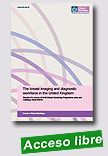 |
This report represents the collective effort of NHS England, Public Health England, the British Society of Breast Radiology and The Royal College of Radiologists. The survey provides information on the workforce involved in providing accessible, high-quality breast-imaging services in the UK, collating quantitative and qualitative data. |
Extraído de: https://www.rcr.ac.uk/publication/breast-imaging-and-diagnostic-workforce-united-kingdom |
 |
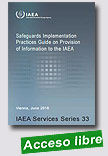 |
Safeguards Implementation Practices Guide on Provision of Information to the IAEA
IAEA Services Series, June 2016, 186 p.
The purpose of Safeguards Implementation Practices (SIP) Guides is to share information about effective safeguards implementation practices for the benefit of all States, particularly with the aim of enhancing their capacity and capabilities in the area of safeguards implementation. States with Small Quantities Protocols are advised to also refer to the Safeguards Implementation Guide for States with Small |
Quantities Protocols (IAEA Services Series 22)1. This SIP Guide addresses the activities undertaken by a State to collect, review and provide to the IAEA complete, correct and timely information, including, for example, nuclear material accounting reports, facility design information, import/export notifications, and additional protocol (AP) declarations.
The Guide primarily addresses the activities undertaken by the IAEA and States pursuant to a comprehensive safeguards agreement (CSA) based on INFCIRC/153 (Corr.) and an AP based on INFCIRC/540 (Corr.). However, States that have concluded a voluntary offer safeguards agreement (VOA) and States that have concluded item specific safeguards agreements based on INFCIRC/66/Rev.2 could also use this Guide to facilitate the implementation of their safeguards agreements.
Extraído de:http://wwwpub.iaea.org/MTCD/Publications/PDF/SVS_33_web.pdf |
 |
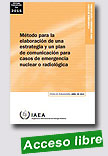
|
Método para la elaboración de una estrategia y un plan de comunicación para casos de emergencia nuclear o radiológica
OIEA, Abril de 2016, 40 p.
El objetivo de la presente publicación es dar a las autoridades nacionales y locales orientaciones para la elaboración de plan de comunicación para casos de emergencia radiológica (PCER) a escala nacional y local. Hay que señalar desde el primer momento que la finalidad de ese plan es documentar las funciones, disposiciones y capacidades específicas que |
se requerirán para la comunicación con el público durante una emergencia radiológica. Las tareas fundamentales para la función de respuesta en materia de comunicación se establecen en las publicaciones Método para elaborar disposiciones de respuesta a emergencias nucleares o radiológicas (EPR-Method 2003) y Comunicación con el público en caso de emergencia nuclear o radiológica (EPR-Public Communications 2012), y se ajustan a las normas de seguridad pertinentes del OIEA. Estas tareas fundamentales incluyen suministrar información e impartir instrucciones al público, así como mantener al público informado.
La presente publicación aporta un modelo adaptable que pueden utilizar los encargados de la comunicación con el público en los Estados Miembros para desarrollar un PCER. El objetivo es contribuir a la elaboración de los planes y disposiciones en materia de comunicación de todas las organizaciones de respuesta o que participan en ella, así como de sus relaciones, tal y como se describe en la publicación EPR-Public Communications 2012.
El PCER resultante deberá ser coherente con el PNER, que es una descripción de todas las funciones y atribuciones relacionadas con la respuesta global a la emergencia radiológica.
El modelo puede adaptarse según convenga para reflejar la estructura de cualquier plan nacional de respuesta a emergencias vigente, siempre y cuando se mantengan las diferentes secciones establecidas.
Extraído de: http://www-pub.iaea.org/MTCD/Publications/PDF/EPR_Comm_Plan_2015_S_web.pdf
|
 |
 |
Final Safety Evaluations for Levy County, Units 1 and 2 Application
U. S. Nuclear Regulatory Commission, May 2016, s. p.
This final safety evaluation report (FSER) documents the U.S. Nuclear Regulatory Commission (NRC) staff’s technical review of the combined license (COL) application submitted by the applicant for the Levy Nuclear Plant (LNP) Units 1 and 2. The applicant, Duke Energy Florida, LLC, was formerly identified as Duke Energy Florida, Inc., and Progress Energy Florida, Inc. By letter dated July 28, 2008, the applicant |
submitted its application to the NRC for COLs for two AP1000 advanced passive pressurized-water reactors pursuant to the requirements of Sections 103 and 185(b) of the Atomic Energy Act of 1954, as amended; Title 10 of the Code of Federal Regulations (10 CFR) Part 52, “Licenses, certifications and approvals for nuclear power plants,” and the associated material licenses under 10 CFR Part 30, “Rules of general applicability to domestic licensing of byproduct material”; 10 CFR Part 40, “Domestic licensing of source material”; and 10 CFR Part 70, “Domestic licensing of special nuclear material.” These reactors are identified as LNP Units 1 and 2, and would be located at a greenfield site in Levy County, Florida. The applicant submitted its final update to the COL application, Revision 9, on April 6, 2016.
The application incorporated by reference 10 CFR Part 52, Appendix D, “Design Certification Rule for the AP1000 Design,” including the AP1000 Design Certification Document (DCD) Revision 19. The results of the NRC staff’s evaluation of the AP1000 DCD are documented in NUREG-1793, “Final Safety Evaluation Report Related to Certification of the AP1000 Standard Design,” and its supplements.
This FSER presents the results of the staff’s review of information submitted in conjunction with the COL application, except those matters resolved as part of the referenced design certification rule. Appendix A to this FSER identifies certain license conditions and inspections, tests, analyses and acceptance criteria (ITAAC) that the staff recommends the Commission impose, should COLs be issued to the applicant. In addition to the ITAAC in Appendix A, the ITAAC found in the AP1000 DCD Revision 19 Tier 1 material will also be incorporated into the COLs, should COLs be issued to the applicant.
The staff’s review of the application, as documented in this FSER, supports the following conclusions with respect to the safety aspects of the COL application: 1) the applicable standards and requirements of the Atomic Energy Act and Commission regulations have been met; 2) required notifications to other agencies or bodies have been duly made; 3) there is reasonable assurance that the facility will be constructed and will operate in conformity with the license, the provisions of the Atomic Energy Act, and the Commission’s regulations; 4) the applicant is technically and financially qualified to engage in the activities authorized; and
5) issuance of the license will not be inimical to the common defense and security or to the health and safety of the public.
Extraído de: http://www.nrc.gov/docs/ML1209/ML120950455.pdf
|
 |
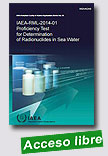 |
IAEA-RML-2014-01 Proficiency Test for Determination of Radionuclides in Sea Water
IAEA Analytical Quality in Nuclear Applications Serie, 2015, 546 p.
The Radiometrics Laboratory of the IAEA Environment Laboratories (NAEL) has been providing quality support products and services for the past 50 years. These include the organization of proficiency tests and laboratory comparisons, and the production of certified reference materials, including a wide range of marine sample matrices and radionuclide levels.
|
As part of these activities, a new proficiency test was organized in the framework of the technical cooperation project entitled Marine Benchmark Study on the Possible Impact of the Fukushima Radioactive Releases in the Asia-Pacific Region, to test the performance of participating laboratories in the analysis of radionuclides in a seawater sample. This exercise was initiated to support Member States in seawater analyses of caesium isotopes in relation to the accident at the Fukushima Daiichi nuclear power plant, in March 2011, and subsequent contamination of the marine environment.
Extraído de: http://www-pub.iaea.org/MTCD/Publications/PDF/IAEA_AQ_43_web.pdf
|
 |
|
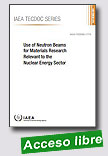
|
Use of Neutron Beams for Materials Research Relevant to the Nuclear Energy Sector
IAEA TECDOC, 2015, 96 p.
In 2010-2013 the IAEA organized and implemented a Coordinated Research Project
(CRP) on Development, Characterization and Testing of Materials of Relevance to Nuclear Energy Sector Using Neutron Beams. As it was required, the CRP participants employed at least one of the neutron beam techniques mentioned above in their Research Contracts/Agreements.
|
As stated in the CRP proposal document the overall objective of this CRP was to employ advanced neutron beam techniques for solving problems of current interest to materials research for the nuclear energy sector, to standardize and qualify relevant experimental techniques and modelling methods, and to promote and establish collaboration among participants of the project and additional interested parties. The specific objectives of this CRP were to: Investigate and characterise materials using neutron beams under extreme conditions relevant for present and future nuclear technologies, e.g. intensive irradiation load, high temperature/pressure/corrosive environment, magnetic fields for fusion, etc.; Optimize and validate advanced neutron beam experimental and modelling techniques as well as processes of data acquisition and analysis, and to develop expertise in characterization and testing of materials in the nuclear energy sector; Create an experimental database to contain reference data to validate the models and calculation tools in nuclear material research; Bring the stakeholders and end users of RRs together for the enhancement of available facilities for applications of RRs in material research relevant to the nuclear energy sector, including nuclear fission and fusion technologies.
As the main output of the above mentioned CRP, this publication aims to expand the knowledge and understanding of material behaviour in terms of their characterization and qualification under extreme conditions for nuclear energy technologies, and also to contribute to the enhancement of utilization and applications of research reactor and accelerator based neutron sources.
Through a great number of contributed papers, concrete examples are given with relevant technical information including some additional materials supplied by the international experts describing the current status of use of diverse neutron beam techniques for materials research targeting the nuclear energy sector.
The present report consists of six technical sections describing the main results achieved during this CRP, list of references, list of contributors to drafting and review, and list of individual paper contributors together with their affiliations and individual paper titles. This publication also includes an attached CD-ROM, in which all 18 individual technical reports are included electronically.
Extraído de: http://www-pub.iaea.org/books/IAEABooks/10824/Use-of-Neutron-Beams-for-Materials-Research-Relevant-to-the-Nuclear-Energy-Sector
|
 |
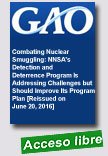 |
Combating Nuclear Smuggling: NNSA's Detection and Deterrence Program Is Addressing Challenges but Should Improve Its Program Plan [Reissued on June 20, 2016]
Government Accountability Office (GAO-US), June 20, 2016, 53 p.
International nuclear and radiological smuggling threatens national security. According to the Department of Homeland Security, detecting and interdicting these materials as far away from the United States as possible increases the probability of successfully deterring nuclear and radiological smuggling into the United States. To help interdict these materials, NNSA’s |
NSDD program has partnered with 59 countries to provide radiation detection equipment and support. GAO was asked to review key aspects of the NSDD program.
This report examines (1) NSDD’s plans for completing key activities and achieving its goals, (2) selected partner countries’ use of NSDD-provided equipment to detect or interdict nuclear or radiological material, and (3) NSDD’s challenges. GAO reviewed NSDD documents, interviewed officials, and visited a nonprobability sample of 19 sites, including land border crossings, airports, and seaports in three countries— Azerbaijan, Bulgaria, and Georgia— selected on the basis of the number and types of sites, their potential as nuclear smuggling routes, and program expenditures, among other factors.
Highlights | Report
Extraído de: http://www.gao.gov/assets/680/677896.pdf
|
 |
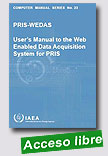 |
PRIS-WEDAS: User’s Manual to the Web Enabled Data Acquisition System for PRIS
IAEA Computer Manual Series, 2015, 118 p.
The user manual for the Web Enabled Data Acquisition System (WEDAS), a system that supports the Power Reactor Information System (PRIS), provides instructions, guidelines and detailed definitions for each of the data items required for PRIS. The purpose of this manual is to ensure PRIS performance data are collected consistently and that the required quality of data collection is ensured. This PRIS-
|
|
 |
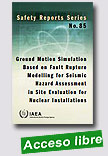 |
Ground Motion Simulation Based on Fault Rupture Modelling for Seismic Hazard Assessment in Site Evaluation for Nuclear Installations
IAERA Safety Reports Series, 2015, 126 p.
This publication explains the principles that underlay strong ground motion simulation, describes various methods for simulating strong ground motions, and shows some examples of strong ground motion simulations using fault rupture modelling. The detailed guidelines and practical tools presented in this Safety Report will be of value to researchers,
|
operating organizations, regulatory bodies, vendors and technical support organizations in the areas of seismic hazard evaluation of nuclear installations. The information provided will also be of great importance for seismic hazard assessments following the Fukushima Daiichi NPP accident.
Extraído de: http://www-pub.iaea.org/books/IAEABooks/10832/Ground-Motion-Simulation-Based-on-Fault-Rupture-Modelling-for-Seismic-Hazard-Assessment-in-Site-Evaluation-for-Nuclear-Installations
|
 |
| |
|
|
 |
| |
|
|
|
|
|
|
|
